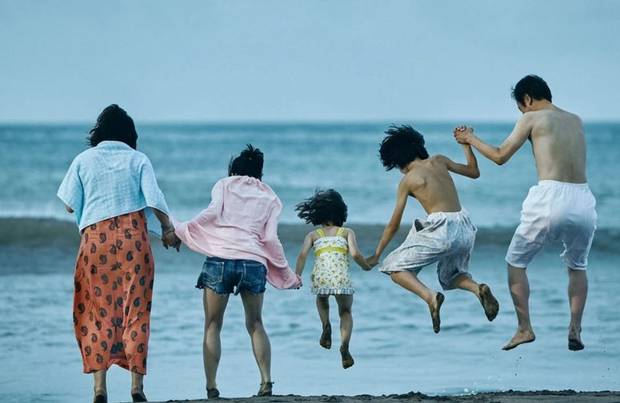Shoplifters
by George Wolf
“Sometimes it’s better to choose your own family.”
A softly nuanced testament to home being where the heart is (and the Palme d’or winner at Cannes), Hirokazu Koreeda’s Shoplifters finds its considerable magic by letting small moments reveal big emotions.
On their way back from pilfering a few items at the local grocery, a Japanese father and son find a young girl named Yuri outside alone, shivering in the Tokyo chill.
They take Yuri home for the night, with a plan to help her return to her parents the next day. But Yuri endears herself to the extended family of small time crooks she’s introduced to, and as Yuri’s behavior points to a possibly abusive home life, it is decided that she should stay.
Writer/director Koreeda returns to the nature vs. nurture themes he has probed throughout his career, most notably in Nobody Knows (2004) and Like Father, Like Son (2013). What defines a family most: bloodlines or genuine love?
Yuri joins a house crowded with characters who may or may not be blood relatives. Slowly, we learn about their lives outside the home, and the part each plays in the network of cons and thefts that allow everyone to keep eating.
The cast is universally charming, and when Koreeda is content to ride the casually observational pace he introduces, Shoplifters works humanistic wonders with its sweet vignettes of love and mercy.
Doubts about the family business slowly creep into the house, though, and with them an unusually heavy weight is added to Koreeda’s hand. Interactions begin to carry pregnant dramatic pauses that only highlight the surprising obviousness of the dialog that follows.
The catch-22, of course, is that it is the subtle effectiveness of the film’s first two acts that makes the hurried nature of the final act seem more desperate than it actually is. Disturbed only momentarily, the spell cast by the memorable family in Shoplifters is still sturdy, and one not that easily broken.









